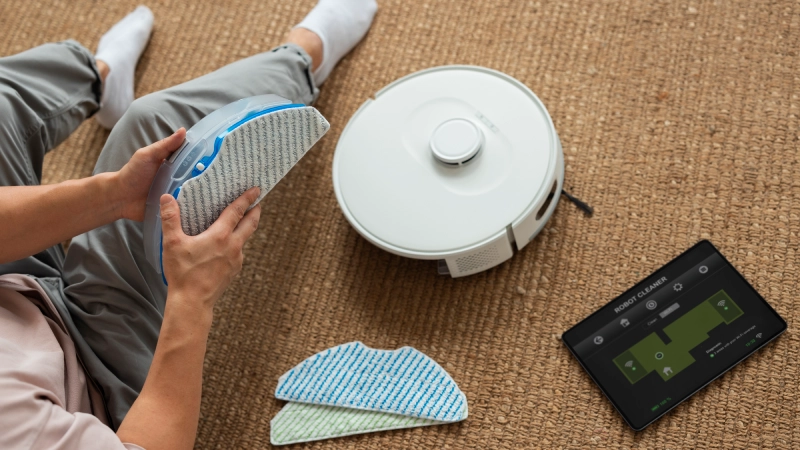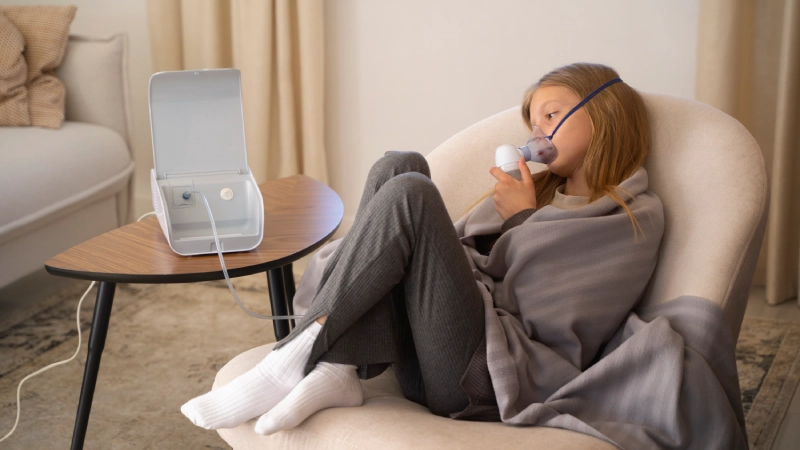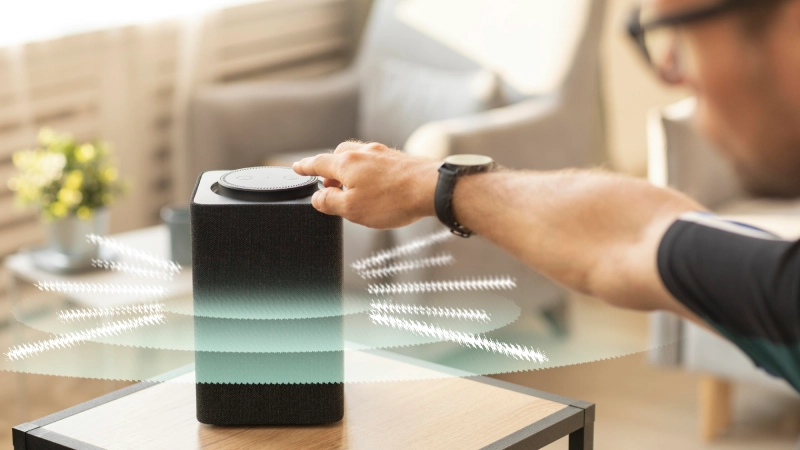Table of Contents
Highlights
- In urban areas where PM2.5 commonly spikes, wearable air purifiers can offer short-term protection and be a sensible part of a comprehensive protection plan.
- The tech world needs to prioritize verified HEPA solutions, with independent lab testing and wearables serving as just one layer among many.
- Real clean air requires collective policy action – devices help individuals, but the long-term fix lies in systemic pollution control.
India’s Air Pollution Reality
Air in most Indian metros tends to read like a warning signal: hazy-looking mornings, repeated “poor” or “very poor” AQI days, and the constant beat of health advisories. It is thus no surprise that small, portable air purifiers – portable enough to be hung around the neck or strapped near the face – have emerged as both stylish accessories and purportedly handy conveniences for the commuting public, pedestrians, and outdoor laborers.
The question for a technology-literate reader is simple: do they actually cut the number of airborne pollutants inhaled on crowded traffic streets and congested transit centers, or are they a gadget-age placebo?
What are wearable air purifiers, and why all the fuss?
Wearable air purifiers are tiny, battery-driven units designed to provide a cleaner micro-environment around the wearer’s breathing space. There are two primary technical methods prevalent in the marketplace.
Filtration-based Wearables
The first is filtration-based: small fans draw ambient air through miniature HEPA or electrostatic filters before it enters the nose and mouth.
- Effective at removing dust, allergens, and pollen
- Typically heavier and need filter replacement

Ionization-based Wearables
The second method is based on ionization: These ionizer purifiers emit negative ions that charge nearby particles, causing them to clump and fall away from the breathing area. Marketing text usually advertises PM2.5 reductions, pollen, bacteria and even viruses, framing these devices as a personal cleaner air bubble for commutes, street-corner waits, and quick outdoor runs.
- Usually lightweight and filterless
- May produce ozone, a potential lung irritant
Big appliance makers and agile startups alike have jumped into this space with different engineering compromises. More expensive filter-based models usually include replaceable H13-grade filters, a compact blower, and multi-hour batteries, all in sleek, mask-like HEPA purifiers or neckband ionizers. Lower-cost neckband units are often filterless and rely on ionization to make claims for particle removal.
Market progress has passed the novelty stage: wearables are now extensively featured on consumer electronics channels and increasingly featured in city health debates. For individuals who spend all day outdoors or are regularly around immediate pockets of dense pollution, the allure is unmistakable: handy protection that does not require a full respirator or clutter a tabletop purifier.
What the science says: promise, reality, and caveats
Scientific studies reveal mixed performance. The technical reality is complex.
Laboratory experiments and controlled field trials show that some wearable purifiers can lower particle concentrations in the immediate breathing zone under certain conditions. Still, actual performance varies widely by device type and environment.
Filter-based wearables
Filter-based wearables that achieve adequate airflow over a proper HEPA medium can measurably reduce exposure to pollen and other model aerosols in test applications. That empirical cue is encouraging for the allergy sufferer and for short-duration, high-exposure events.
- Shown to lower particle concentrations in controlled environments.
- Effective for short-term use (commutes, quick outdoor exposure).
- H13-grade HEPA filters can reduce allergens and small particulates measurably.

Ionizer-based devices
Ionizer-type, filterless devices show a more varied picture.
Independent testing has consistently shown that many ionizers offer little more than modest, measured reductions in steady-state particle concentrations under real-world conditions – often far short of marketing claims.
Furthermore, ineffective design can produce unwanted byproducts, such as ozone, which can pose another health hazard if a device is run continuously in close proximity to the face.
Studies of portable tabletop air cleaners make one thing clear: filtration is effective when enough air moves through a good filter. It is difficult to translate that physics into a compact wearable form factor, which is why no wearable creates a really “clean room” around the wearer.
The main conclusions are that device architecture counts, laboratory characterization is critical, and filter-based units tend to outperform passive ionizers for particle reduction in most test conditions.
Are Wearable Air Purifiers Practical for Indian Commuters?
In daily life in Indian metros, wearable air purifiers offer both strategic advantages and clear limitations.
For brief, intense exposures – getting off a bus at a traffic-bottlenecked intersection, standing on a packed station platform, or walking along an arterial street in heavy traffic – a well-designed wearable HEPA device can reduce the immediate particle load entering the lungs compared to no individual protection.
That advantage is most applicable to short trips or spurts of outdoor time rather than constant, extended exposure. Premium models also aim to balance filtration with comfort and speech clarity, addressing complaints about bulk and communication issues that plague full-face respirators.

Wearable units still are not a replacement for certified respirators or heavy-duty indoor filtration systems. In cases of prolonged heavy exposure, medical-grade respirators such as N95/FFP2 equivalents provide a more effective barrier. Similarly, a well-fitting indoor HEPA cleaner in a bedroom or office has a much greater effect on time-weighted exposure over several hours than a wearable can.
Real-world performance variations make decisions even more challenging to make: too many devices are tested in a hypothetical case, and independent tests often demonstrate considerably less particle suppression in real urban situations.
There is also a safety issue with some ionizing devices: possible generation of ozone and chemical byproducts further supports the suggestion to favor devices tested and certified for low or zero ozone emissions. In brief, wearables are a helpful adjunct for commuters and high-risk personnel, but not a substitute for systemic interventions or professionally certified personal protective equipment in high-exposure settings.
Buying guide: How to choose the right wearable air purifier
When selecting a wearable purifier, technical specifications that affect real-world effectiveness should be considered
1. Filtration Type
Above all, filtration technology must be regarded as: proper HEPA filtration (H13 or H14, if available), which is more effective at removing particulates than unfiltered ionizers.
Filter-grade devices have a more justifiable engineering rationale for minimizing PM2.5 and allergen exposure.
2. Independent Testing
Third-party lab or university validation over manufacturer statements is the second essential test: ensure that independent testing confirms its performance. Startups and companies may point to in-house test labs—objective validation of scope, methods and findings keeps expectations from being unfairly high.
3. Battery Life & Airflow
Battery life and airflow are reasonable compromises to consider side by side. More airflow modes will provide greater protective performance in the breathing zone but consume battery capacity more quickly, so reported run times should be substantiated with actual user feedback where feasible.

4. Safety & Certification
Safety and certification information are also relevant: for ionizers, specific ozone emission levels are key, and for filter units, how easy and affordable replacement filters are available determines long-term value.
5. Comfort & Hygiene
Comfort and hygiene are not insignificant issues – uncomfortable wearable devices that are difficult to clean or costly to maintain soon sit in a drawer. Replaceable filters, washable parts, and ease of wear are qualities that determine whether a product will stay in everyday use.
Verdict – nice-to-have or must-have?
For the regular commuter in an Indian metropolis, a wearable air purifier is best described as a helpful addition instead of a necessity. The devices excel as short-term, tactical solutions—products to decrease current inhaled particle doses while taking a dusty walk, riding in a crowded vehicle, or doing a short outdoor errand. They are especially valuable for allergy patients or individuals with specific sensitivities who enjoy a greater reduction in exposure when combined with other interventions.
But the larger public health problem is structural, and the long-term fix for city air quality is cleaner fuels, more stringent emissions controls, improved public transit infrastructure, and urban dirt control. Personal devices can provide quick, personal relief, but they can’t substitute for policy-driven reductions that cut pollution at scale.